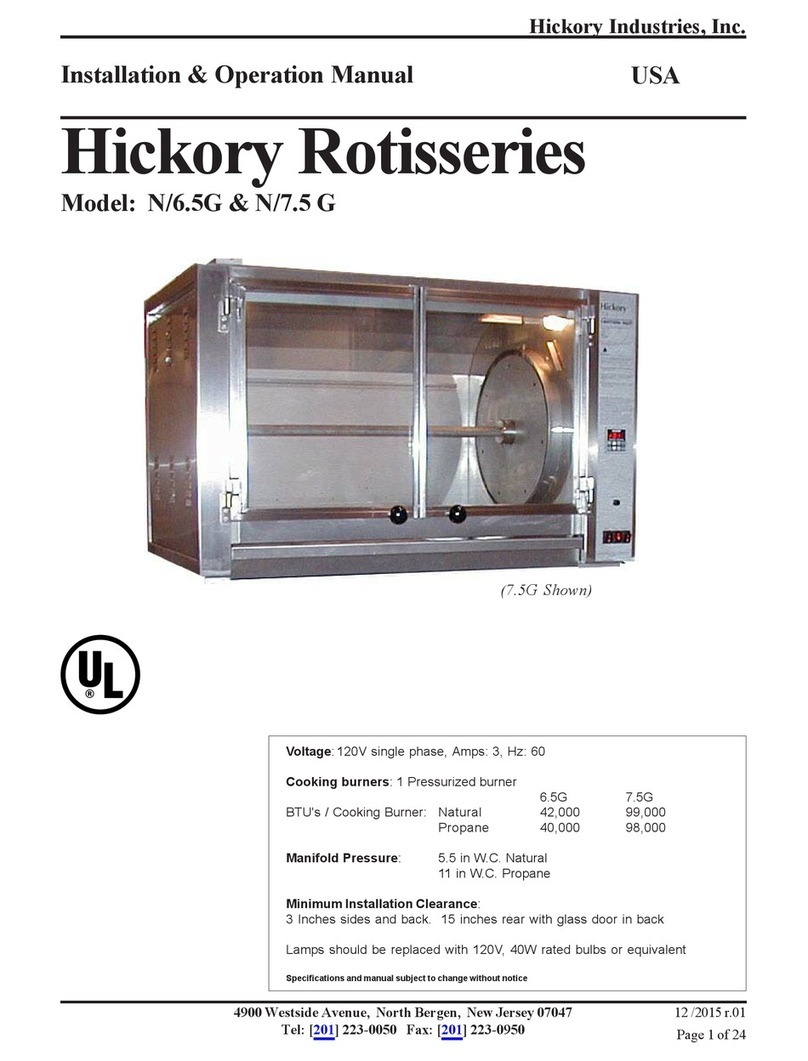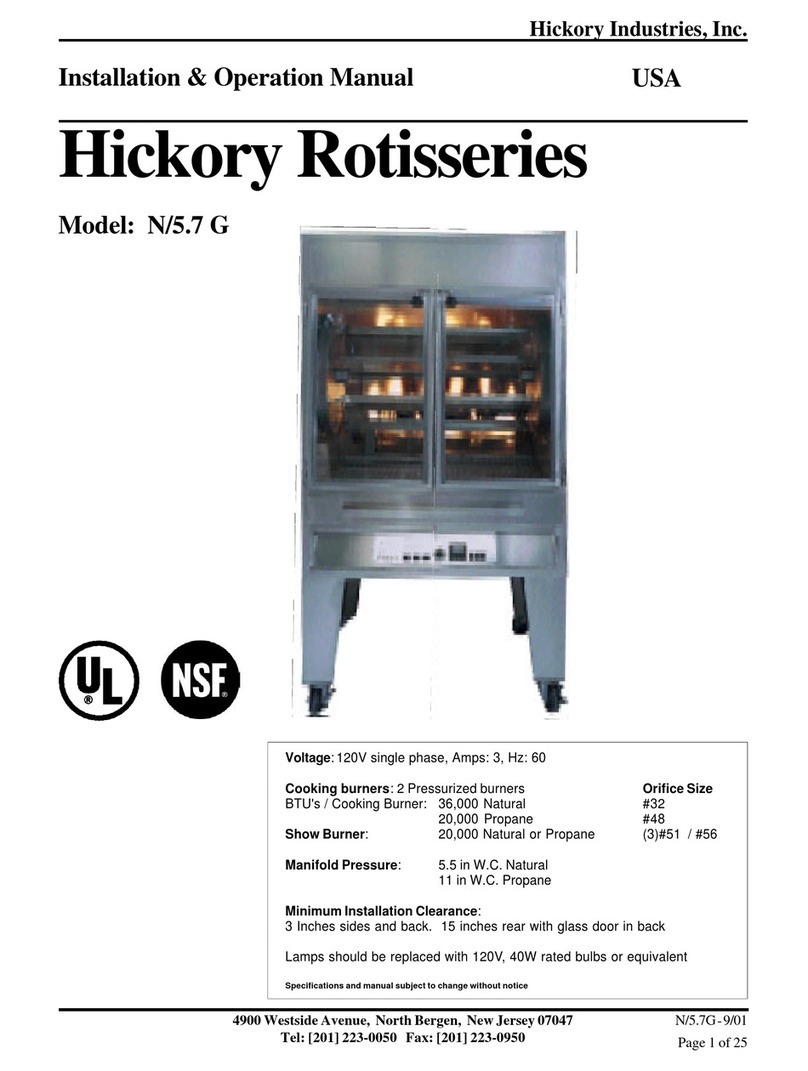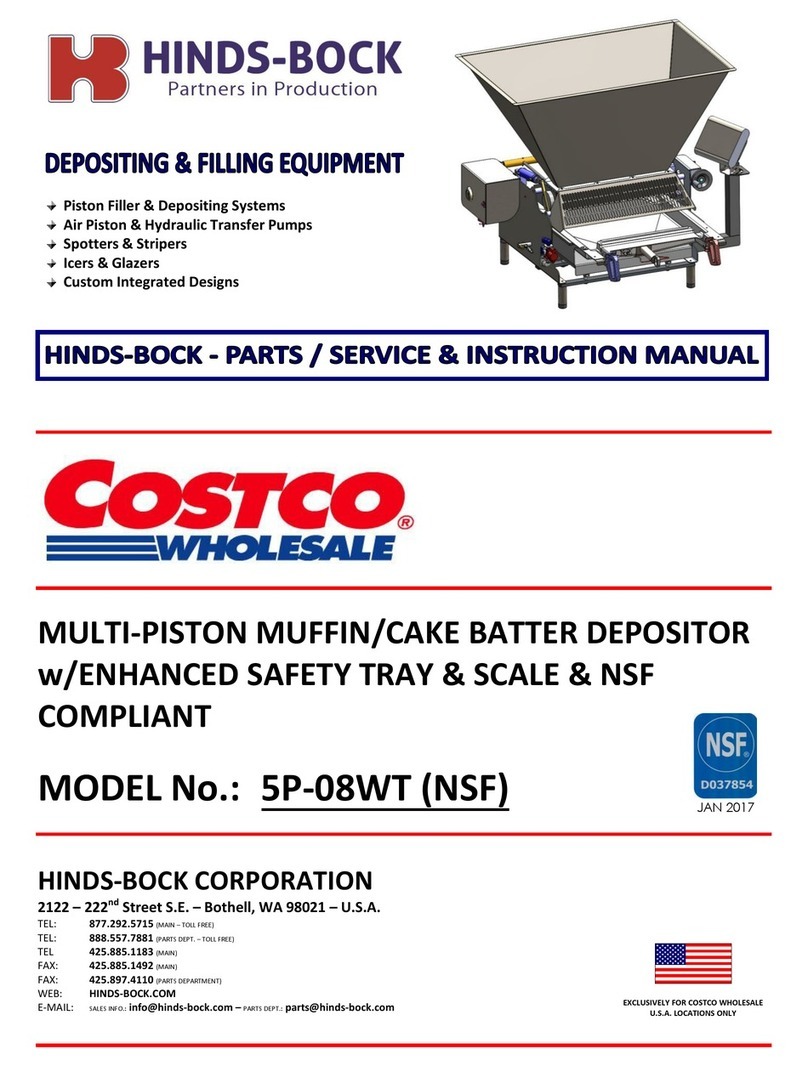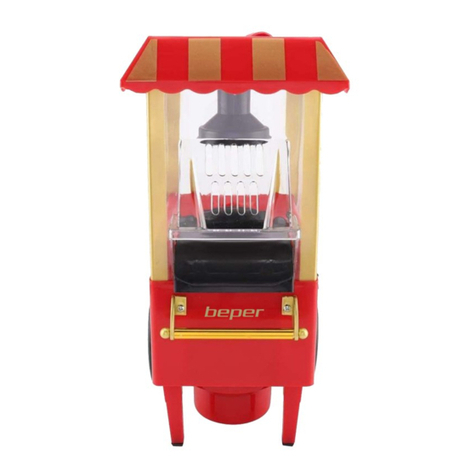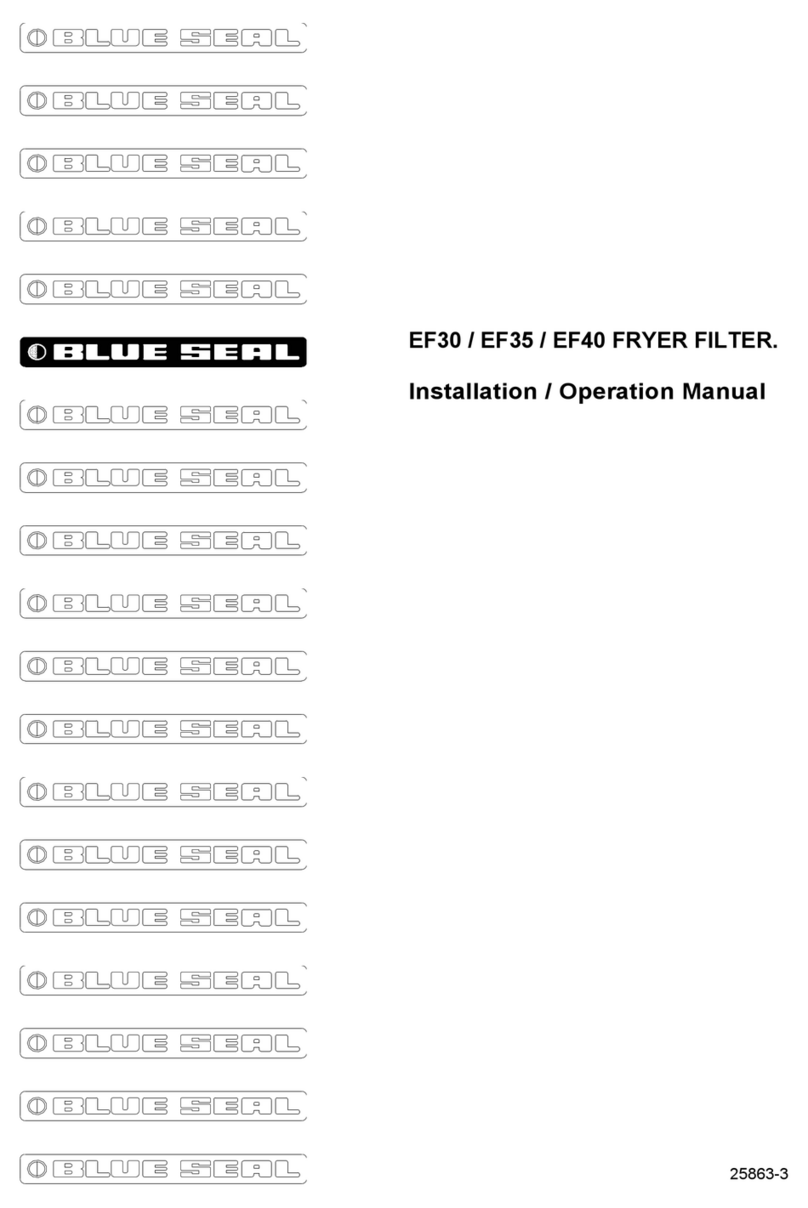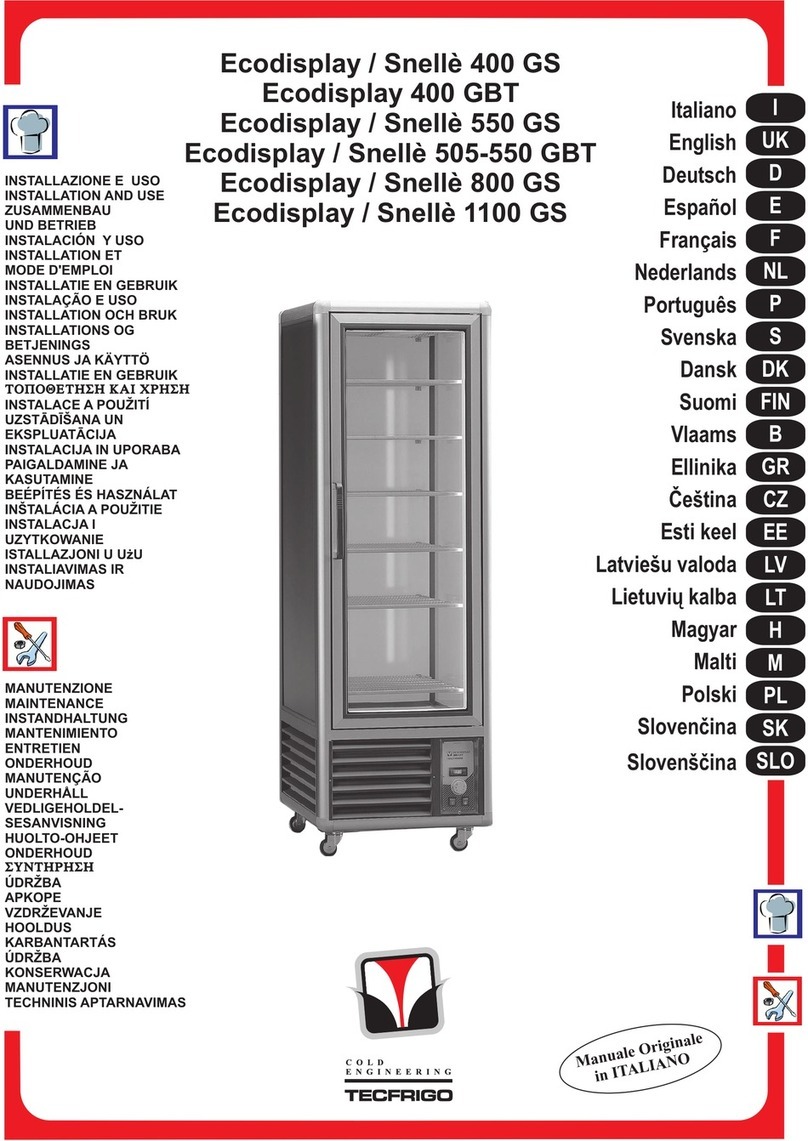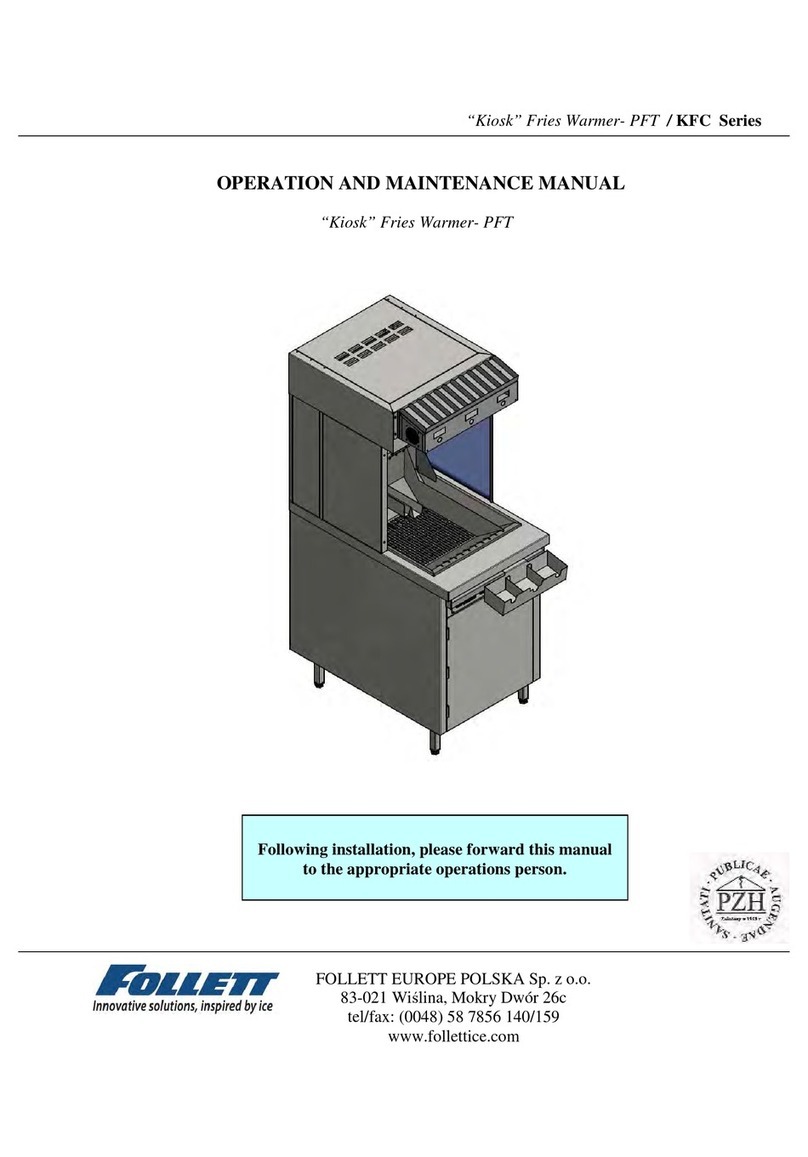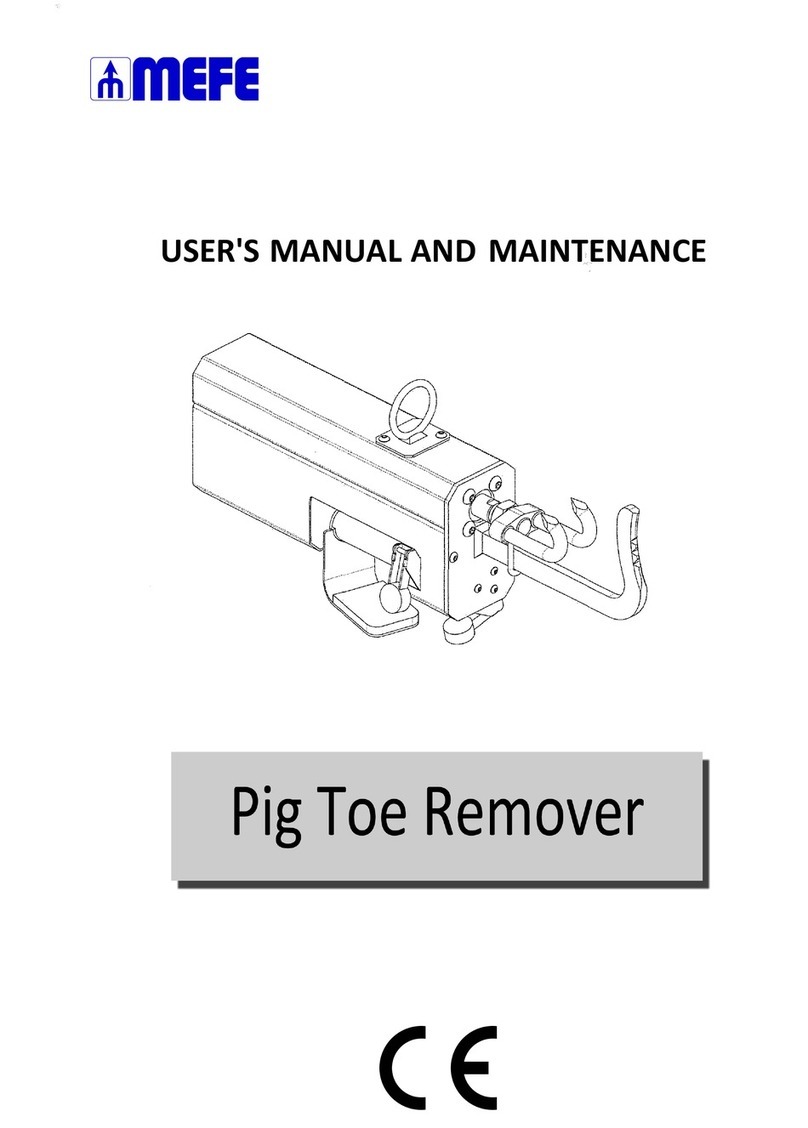Hickory Industries N/7.5E User manual

4900 Westside Avenue, North Bergen, New Jersey 07047
Tel: [201] 223-0050 Fax: [201] 223-0950
Hickory Industries, Inc.
N/14.5E - 6/15/04
Page 1 of 24
Hickory Rotisseries
USA
Installation & Operation Manual
Models: N/7.5E
N/14.5E (Shown)
Voltage: 208V, 3 phase, 5 Wire
Amperage Draw: Line 1 , Line 2 , Line 3 , Nueltral .
N/7.5E N/14.5E
Elements: 612
Watts Per Element: 2000 2000
Total Cooking Wattage: 12,000 24,000
Lighting: (2)25W (4)W
Lamps should be replaced with 120V, 25W, 300°C rated bulbs or equivalent
only.
Minimum Installation Clearance:
3 Inches sides, 6 inches rear.
Specifications and manual subject to change without notice

4900 Westside Avenue, North Bergen, New Jersey 07047
Tel: [201] 223-0050 Fax: [201] 223-0950
Hickory Industries, Inc.
N/14.5E - 6/15/04
Page 2 of 24
Table of Contents
Installation Tips .................................................. 3
Overview Of The Unit ......................................... 4
Unpacking The Unit ............................................ 5
Setting Up The Rotisserie .................................. 5
Control Panel Overview ...................................... 5
Spit Preparation Using Angle Spits .................... 6
Spit Preparation Using Spits & Skewers ............ 13
Daily Operation .................................................. 18
Cleaning ............................................................ 19
Thermometer Guidelines .................................... 20
Temperature Chart ............................................. 21
Do's and Don'ts ................................................. 22
Parts Diagram ................................................... 23
Electrical Diagram ............................................. 24
Warranty ............................................................ 25

4900 Westside Avenue, North Bergen, New Jersey 07047
Tel: [201] 223-0050 Fax: [201] 223-0950
Hickory Industries, Inc.
N/14.5E - 6/15/04
Page 3 of 24
Installation Tips
a. When installing these units, it is important to comply with
the most recently established rules and regulations as
deemed pertinent by the local and national electrical, ventila-
tion, sanitation, and fire codes. The Model 14.5E was tested
for safety by Intertek Testing Services ETL Semko.
b. Electric units normally do not require venting. The room
where the units are being installed must be ventilated in ac-
cordance to the valid codes and regulations.
c. The units are to be installed securely and horizontally.
The units may be installed on combustible floors.
d. The minimum clearance to the side walls must be 3
inches and 6" to the rear wall. It is also important to insure
that the bottom of the units is kept clear so that proper venti-
lation or air exchange can occur.
e. When installing the unit, ensure that a qualified
electricain performs the electrical connection. The unit re-
quires 208V three phase power with a nueltral and a ground.
f. After the unit is installed, ensure that the operator and or
installer reads the operating manual for proper operation.
g. After installation, when the unit is turned on, it may
smoke slightly. This is due to cleaning oils sprayed on the
unit prior to shipping. This is normal.

4900 Westside Avenue, North Bergen, New Jersey 07047
Tel: [201] 223-0050 Fax: [201] 223-0950
Hickory Industries, Inc.
N/14.5E - 6/15/04
Page 4 of 24
Unpacking the unit:
a. After the unit is un-crated, roll the unit and all accessories into place.
b. Remove all vinyl paper from the stainless steel surfaces
c. Remove all tape from glass surfaces and metal surfaces
d. Carefully remove and inspect parts that are inside the unit. Ensure that all materials
sent with the crate are inspected:
Items that are sent with the unit are:
(extra parts vary from customer to customer)
Cooking Spits (7) Spits and skewers, Angle spits or thermowave spits.
Removable rear cleaning panel (2)
Ball Knobs (4)
Log Carrier (1) Installed on the rear burner
Thumbscrew Key (1) If sent with spits and skewers
Setting Up The Rotisserie
a. Clean, rinse and sanitize the spits. If baskets and accessories are ordered, clean and
sanitize as well.
b. Place the ball knobs on the doors.
Tighten firmly.
c. Place the removable rear panel on the rear of the unit.

4900 Westside Avenue, North Bergen, New Jersey 07047
Tel: [201] 223-0050 Fax: [201] 223-0950
Hickory Industries, Inc.
N/14.5E - 6/15/04
Page 5 of 24
Motor Switch:
Turns motor ON / OFF
Light Switch:
Turns lights ON / OFF
Temperature Switch:
Turns heat ON / OFF Indicator is illuminated when the
thermostat calls for heat.
Thermostat:
Cycles heat ON and OFF during cooking.
Product that has marinades, citrus, rubs etc., may burn which can be
remedied by turning the thermostat at a lower temperature.
Timer:
Displays the time of day.
Allows the unit to cook and can
be used to shut the heat OFF
at the end of a cook.
TIMER NEEDS TO ON FOR
THE UNIT TO COOK
Timer (Upper)
Thermostat (Upper)
Switches
Fuse .5A (Protects
Lights and motors)
Control Panel Overview

4900 Westside Avenue, North Bergen, New Jersey 07047
Tel: [201] 223-0050 Fax: [201] 223-0950
Hickory Industries, Inc.
N/14.5E - 6/15/04
Page 6 of 24
Spitting Chickens
The most important part in getting started with a rotisserie is knowing how to properly spit the product.
This is quite easy, but it must be learned! As an operator, you will become an expert in spitting chickens
within half an hour! There are two types of commonly used spits: the angle spit and the regular spit. The
following pages describe and show how spitting is done with both these types of spits.
Figure 1. Chickens Ties
When using a “V” or angle spit, it is very important to tie
or truss the product being cooked. This prevents the
product from moving around the spit and also prevents
damage by preventing the legs and wings from flopping.
In this section, we will show how to properly truss a
chicken. It is important to use a tie to fit the size of the
product. In this case, we are tieing a 2 3/4lb. chicken
with a 6” tie.
Figure 2. Trussing Wings
With the back of the chicken facing up, take the tie and
wrap it around the breast, making sure to tuck the wings
against the breast. Pull on the tie as pictured. You will
also need to hold the chicken with your other hand.
Figure 3. Trussing Across Back
While pulling on the tie, cross the strings so that you
make an “X” across the back of the chicken. With the
“loop” in your hand, you will now need to tie the legs of
the chicken.
A. Using Angle Spits

4900 Westside Avenue, North Bergen, New Jersey 07047
Tel: [201] 223-0050 Fax: [201] 223-0950
Hickory Industries, Inc.
N/14.5E - 6/15/04
Page 7 of 24
Figure 4. Trussing Legs
While pulling on the tie, loop the strings over the legs of
the chicken.
Figure 5. Trussed Legs
Make sure that both legs are securely held by the tie.
Figure 6. Trussed wings
Make sure that both wings are securely held by the tie
against the breast of the chicken.

4900 Westside Avenue, North Bergen, New Jersey 07047
Tel: [201] 223-0050 Fax: [201] 223-0950
Hickory Industries, Inc.
N/14.5E - 6/15/04
Page 8 of 24
Figure 7. Pop-up Thermometer
The only way to tell if a chicken is done is take
the internal temperature. Since it can be difficult
to probe the chickens while they are in the rotis-
serie, we recommend the use of pop-up ther-
mometer. These inexpensive items should be
place in the thickest part of the chicken, which is
the breast. The thermostat will “pop-out” when
the internal temperature reaches 185º F.
Figure 8. Chicken Ready to Spit
With the chicken trussed and the pop-up thermometer in
place, the chicken is ready to be spitted with an angle
spit.
Figure 9. Spitting Accessories
In order to make the use of the angle spits fast
and easy, we offer an accessory called a Spit
Holder (Hickory Part 195). This aluminum plate
offers six holes where the base (square-end) of
the angle spit can be inserted.

4900 Westside Avenue, North Bergen, New Jersey 07047
Tel: [201] 223-0050 Fax: [201] 223-0950
Hickory Industries, Inc.
N/14.5E - 6/15/04
Page 9 of 24
Figure 10. Using the Angle Spit
Insert the bottom (square-end) of the spit into one of the
holes in the Spit Holder.
Figure 12. Chicken Position on Spit
When spitting the chicken, make sure that the breast is
sitting on the flat, exterior side of the spit. Notice on the
picture how the breast is not directly on the rounded
corner of the spit, but above one of the flat parts of the
“V”. It is also important to note that the legs (and the
tie) must sit on the same flat side of the spit. This picture
shows exactly how the chicken should look when
spitted.
Figure 11. Spitting a Chicken
Spit the chicken through the cavity. The chicken should
be inserted through the “head” (or at least where the
head used to be) first.

4900 Westside Avenue, North Bergen, New Jersey 07047
Tel: [201] 223-0050 Fax: [201] 223-0950
Hickory Industries, Inc.
N/14.5E - 6/15/04
Page 10 of 24
Figure 13. Incorrectly Spitted Chicken
This picture shows a chicken with the legs improperly
placed. Note how the chicken seems to hang to one
side. When spitted this way, the chickens will tend to
“bounce” up and down causing the chicken to breakup.
Figure 14. Complete Spit
After inserting the first chicken, push it all the way to the
bottom of the spit and add the next chicken. Depending
on the size of the birds and on the rotisserie model, each
spit will accommodate three to four 2 3/4lb. chickens.
Once completed, the spit is ready to be placed in the
rotisserie.

4900 Westside Avenue, North Bergen, New Jersey 07047
Tel: [201] 223-0050 Fax: [201] 223-0950
Hickory Industries, Inc.
N/14.5E - 6/15/04
Page 11 of 24
Figure 15. Inserting Single Bottom Skewer
Attach a single skewer with a thumb screw at least 1/2"
fromthesquareendofthespit. Theskewermustbeonthe
round section of the spit.
Figure 16. Fastening Bottom Skewer
Usethe"T" shapedtoolsuppliedwith theunittotighten the
thumb screw. This will prevent the bottom skewer from
slidingoffthescrew.
Figure 17. Using the Spit Holder
Even though the chickens can be spitted on a work table,
theuseofthe Spit Holder (HickoryPart195)willmakethe
spittingprocessmucheasier.
B. Using Regular Spits

4900 Westside Avenue, North Bergen, New Jersey 07047
Tel: [201] 223-0050 Fax: [201] 223-0950
Hickory Industries, Inc.
N/14.5E - 6/15/04
Page 12 of 24
Figure 19. Tucking the Legs
The legs must be tucked between the skewer prongs
and the center spit. Note that the bottom of the drum-
stick is what is being locked in place.
Figure 20. Pressing Chicken Towards Skewer
When viewed from the breast side of the chicken, the
bottom of the drumstick is being pushed back while the
meaty part of the leg is “puffed up” for better presenta-
tion. Note that the skewer is not going straight through
the drumstick!
Figure 18. Inserting Chicken
Takethechicken,withthedrumsticksinthedirectionofthe
attachedskewer,andslide thespitthroughthe cavity ofthe
chicken.

4900 Westside Avenue, North Bergen, New Jersey 07047
Tel: [201] 223-0050 Fax: [201] 223-0950
Hickory Industries, Inc.
N/14.5E - 6/15/04
Page 13 of 24
Figure 21. Locking Wings
The wings must be locked or tucked in place. When
using the models N/5.5 and N/10.10, the locking
method (pictured here) is only recommended with
birds up to 2¾lbs! With larger birds, the wings must
be tucked under the breast, with elastic ties or “wing
tuckers”. If the wings are locked on large birds, the
wings on the adjacent spits will rub or catch, preventing
the spits from rotating freely. This will cause the wings
to break off or the gear mechanism to jam.
Figure 22. Tucking Wings
With larger birds, the wings must be tucked under the
breast, with elastic ties or “wing tuckers”.
Figure 23. Tucked Wings
Notice how the wings are tucked against the breast. By
“tucking” instead of “locking” the wings, the working or
rotating diameter of the chicken has been reduced.

4900 Westside Avenue, North Bergen, New Jersey 07047
Tel: [201] 223-0050 Fax: [201] 223-0950
Hickory Industries, Inc.
N/14.5E - 6/15/04
Page 14 of 24
Figure 24. Inserting Double Skewers
With the first chicken in place, insert a double skewer
down the length of the spit into the shoulders of the first
chicken. No thumb screw is required for the double
skewers!
WARNING! When driving the double skewer
into the chicken, do not exert pressure from the
end of the prongs! These are sharp and will pierce
a finger or hand if not careful. Only apply
pressure at the bottom of the "U" shaped half of
the skewer!
Figure 25. Double Skewer in Place
With the double skewer in place, insert the next chicken
down the length of the spit and position the chicken as
previouslydescribed.
Figure 26. Loaded Spit
When the loading of the chickens is complete, the end
of the spit must be locked in place with another single
skewer.

4900 Westside Avenue, North Bergen, New Jersey 07047
Tel: [201] 223-0050 Fax: [201] 223-0950
Hickory Industries, Inc.
N/14.5E - 6/15/04
Page 15 of 24
Figure 13. Completing the Load
Slide a single skewer with a thumb screw into place
from the top,
Figure 14. Tightening Final Skewer
Compress the chickens by exerting pressure on this last
skewer, and tighten the thumb screw securely.
Figure 15. Securing the Load
Tighten the thumb screws with Hickory's thumbscrew
tightening tool. This will prevent the chickens from
coming loose.

4900 Westside Avenue, North Bergen, New Jersey 07047
Tel: [201] 223-0050 Fax: [201] 223-0950
Hickory Industries, Inc.
N/14.5E - 6/15/04
Page 16 of 24
Hickory Timer Tips
Timer
Setting / Resetting the Time of Day
In the event of a power failure the timer display will be flashing. To reset the Time of Day,
press both buttons "B" & "C" simultaneously and while holding these buttons depressed;
toggle the plus and minus buttons "D" & "E" to set the time of day.
Entering Manual Mode
To insure that the timer does not interrupt the cooking cycle(s), you must make sure that the
cook pot symbol is always illuminated on the timer. No other icons should be illuminate i.e.
a steady or flashing "A". To enter this manual mode; press both buttons "B" & "C"
simultaneously. This will clear any accidental programming stored in the timer and place
the timer into the manual cooking mode.
Bell/Time Function
To use the timer as a count down timer; press and release the bell button "A". Immediately
press the plus (+) button "E" and set the cook time desired. (i.e. 1hr 30 minutes). After the
time has elapsed, the timer will beep. You can add additional time by repeating the above-
mentioned process. You can also decrease the cooking time by pressing the minus (-)
button "D" instead of the plus button "E".
Louder Beep/Buzzer
Occasionally, if the wrong button is depressed it will quiet the beep/buzzer. The audible
tone may change to a much lower tone. To get the loudest tone available; press both the
plus (+) and minus (-) buttons "D" & "E" simultaneously. Continue to press and release
both buttons until you have reached the desired tone. The unit is programmed with one
loud and two low tones.
Silencing the Beep/Buzzer
Press the bell button "A".
9: 00
A B C D E

4900 Westside Avenue, North Bergen, New Jersey 07047
Tel: [201] 223-0050 Fax: [201] 223-0950
Hickory Industries, Inc.
N/14.5E - 6/15/04
Page 17 of 24
Cooking Preparations
Morning Preparation:
1. Cover the center shaft with aluminum foil.
2. Add water into upper and lower drip pans (approximately one inch of water should be
sufficient. If the unit will be in operation all day, you may need to add more water
accordingly.).
3. Be sure to spray the non-cooking components of the oven with Kote™. (Spray the
interior walls; drums and the rear wall with USDA and FDA approved KOTE™.
4. Preheat the oven to desired temperature.
Cooking Preparations:
9: 00
A B C D E
1. Be sure that the rotisserie has been preheated.
2. Using the motor switch, stop the rotation of the drums, open the glass doors and place the
spitted product in the rotisserie. The pointy end of the spit goes to the right and the
square end of the spit goes towards the left.
Left side Right side
Square hole Round
3. Advance the drum until the unit is loaded.
4. Close the glass doors.
5. Be sure that the timer is set to cook. By pressing both the cook pot ("B") and cook pot off
("C") buttons simultaneously you will place the unit into the manual-cooking mode. The cook
pot symbol on the timer will illuminate.
6. Turn your temperature switch on and verify the thermostat setting. If the timer is set
properly, the temperature switch will be illuminated. This indicator will only glow when the
unit calls for heat.
7. Press the bell/chime button ("A") and then press the + button ("E") to set the desired cooking
time in hours and minutes.
8. After the programmed time has elapsed, the timer will beep, but the cooking process will
continue. Always check the product’s internal temperature and ensure that they are at least
180°F. If the product needs additional time to cook, you can do so by pressing the cook pot
symbol ("B") and then pressing the + button ("E").
9. If product is fully cooked, shut off the temperature switch, remove the product from the oven
and package accordingly. Take care not to allow the product temperatures to fall below
critical temperatures.
10. To start a new load, follow step #1 through #7. REMINDER: If possible, wipe the glass
down with approved glass cleaner between cooking loads. This will facilitate end of
day cleaning.

4900 Westside Avenue, North Bergen, New Jersey 07047
Tel: [201] 223-0050 Fax: [201] 223-0950
Hickory Industries, Inc.
N/14.5E - 6/15/04
Page 18 of 24
Cleaning:
1. Shut off all switches.
2. Allow oven cool down. Please note - if the lights are not shut off, the lamp guards may break
when spraying the oven with cool water.
3. Remove the aluminum foil from the center shaft.
4. Pull the upper drip pan and drain drain the contents of the drip pan by removing the drip pan plug.
Repeat with the lowerdrip pan. DO NOT drain grease into the sink. We recommend that the
drippings are placed in a bucket, cooled down and then skimmed off and placed in fat rendering
tanks.
5. Pour some warm water into the drip pan and wipe the oven surfaces with a rag using the soapy
solution; the Kote coating and the fat that has adhered to the Kote will remove very easily. If the
unit was not sprayed with Kote, appropriate degreasers / cleaner will be required. Take care not
to spray aggresive cleaners on the elements and lamp guards.
6. When finished cleaning the oven, drain the soapy solution from the drip pan and wipe the drip
pan clean.
7. Wipe the glass with a glass cleaning solution. DO NOT USE RAZOR BLADES, SCOURING
PADS OR ANYTHING ABRASIVE TO CLEAN THE GLASS. To minimize grease from baking
on the glass, during the day should wipe the glass before loading product in the unit.
8. Place the spits and skewers and/or baskets in a hot soapy solution. Soak for 15 - 20 minutes –
this will loosen the baked on residue. If you have basket spits, brush the baskets clean with a
scrubbing brush. Follow guidelines for rinsing and sanitizing.
9. Recommendation – Place aluminum foil on the the center shaft, spray the oven down with
KOTE™and fill the drip pan with water in preperation for tomorrow’s cooking cycle. Kote can be
ordered thru Kay Chemicals @ 800-333-4300

4900 Westside Avenue, North Bergen, New Jersey 07047
Tel: [201] 223-0050 Fax: [201] 223-0950
Hickory Industries, Inc.
N/14.5E - 6/15/04
Page 19 of 24
Thermometer Guidelines
When checking product temperature, ensure that you have a calibrated thermometer. A good
thermometer should be 1/8" thick and about 6 inches long. The thermometer should not have a
dimple. If it does, this is where the thermometer actually measures temperature. This dimple must
be placed in the thigh area.
Dimple Thermometer Dimpleless Thermometer
The thermometer should have an easily readable scale. It also should be calibrated using
manufacturers recommendation.
Readable scale 0-500 recommended Calibrating nut
When checking for product temperature, insert your thermometer into the meatiest part of the
product. When testing chickens, the thermometer should be inserted into the leg and thigh area and
it should read 180 to 185 degrees F.

4900 Westside Avenue, North Bergen, New Jersey 07047
Tel: [201] 223-0050 Fax: [201] 223-0950
Hickory Industries, Inc.
N/14.5E - 6/15/04
Page 20 of 24
Temperature Chart
Product Internal Temperature
Poultry 185F
Beef 135-140F Rare
150F Medium
160F Well
Lamb 140F Rare
150F Medium
160F Well
Pork 160F Medium
170F Well
This manual suits for next models
1
Table of contents
Other Hickory Industries Commercial Food Equipment manuals
Popular Commercial Food Equipment manuals by other brands
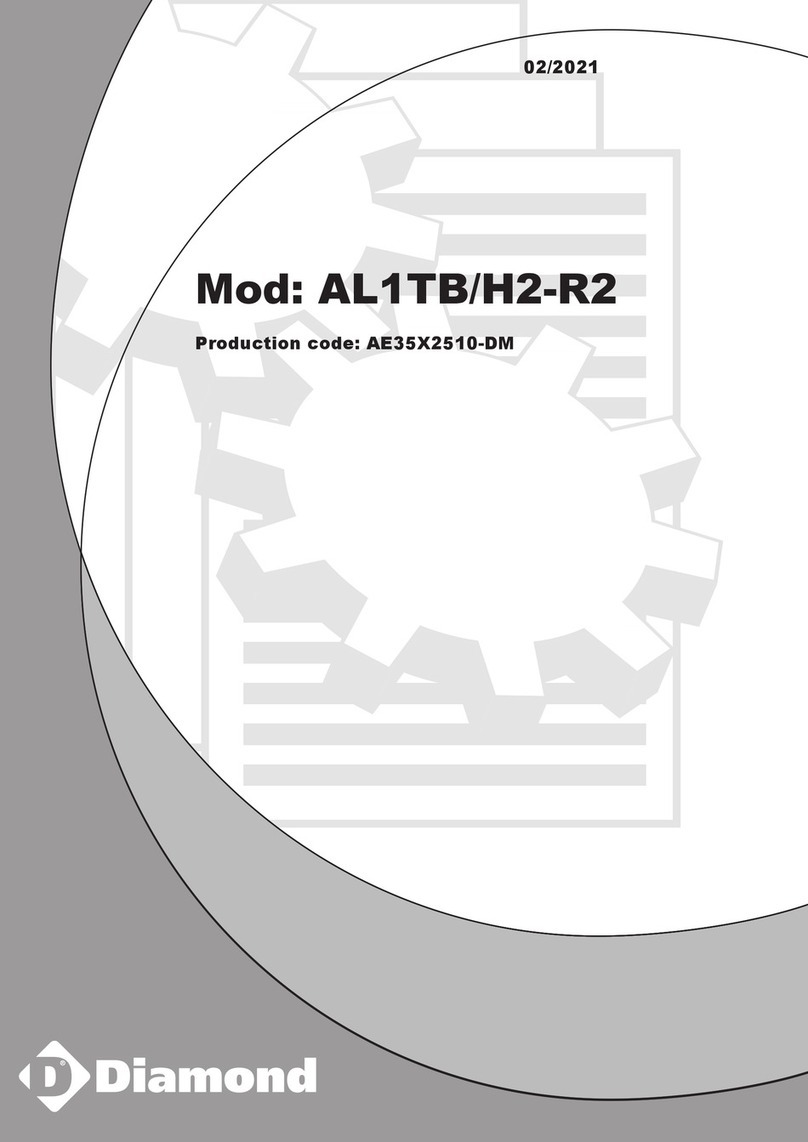
Diamond
Diamond AL1TB/H2-R2 Installation, Operating and Maintenance Instruction
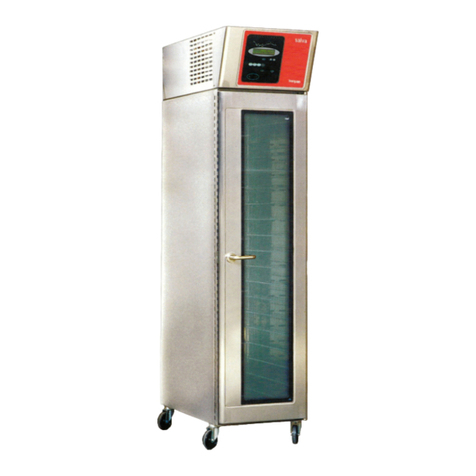
Salva
Salva IVERPAN FC-18 User instructions
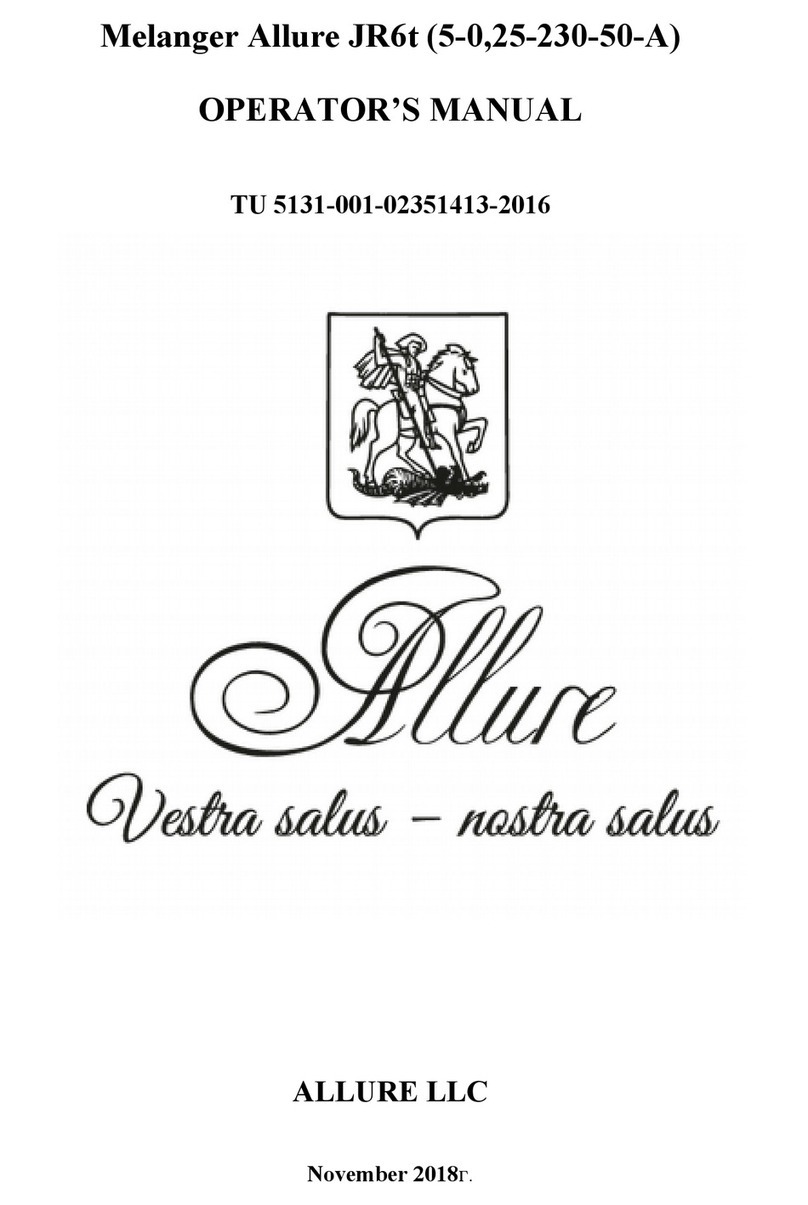
Allure
Allure Melanger JR6t Operator's manual
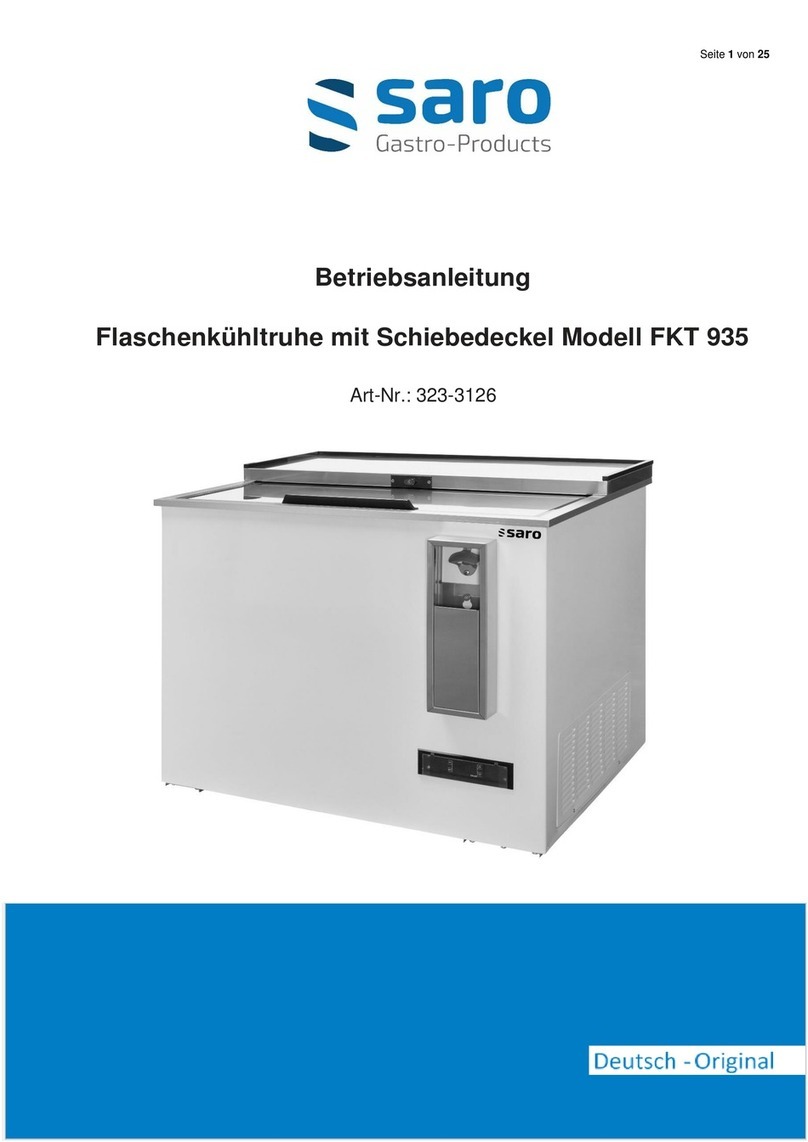
saro
saro FKT 935 operating instructions
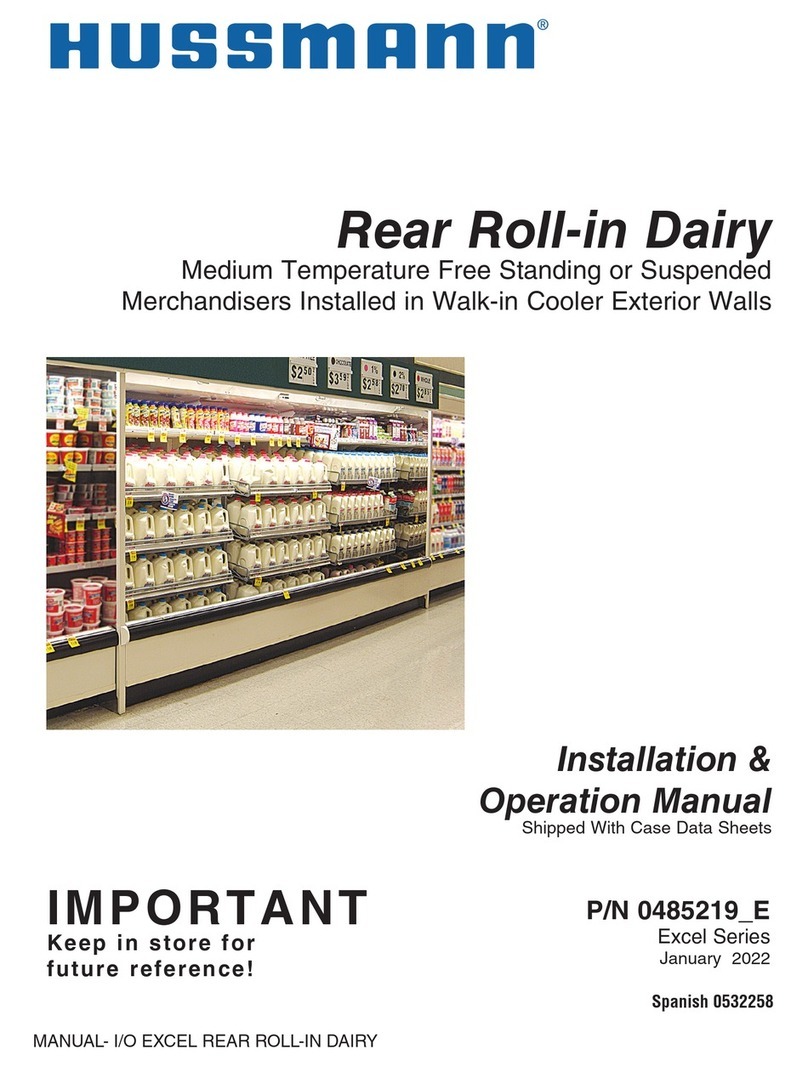
Hussmann
Hussmann Rear Roll-in Dairy Installation & operation manual
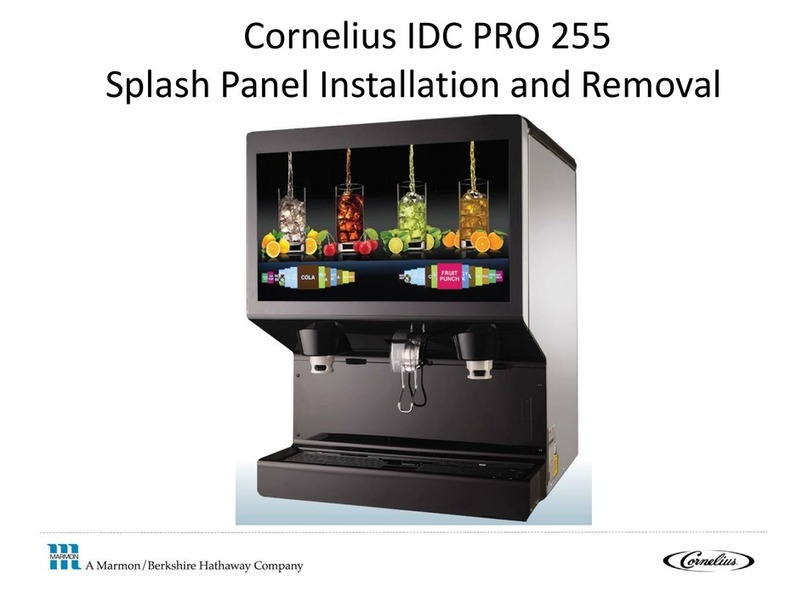
Cornelius
Cornelius IDC PRO 255 Service manual
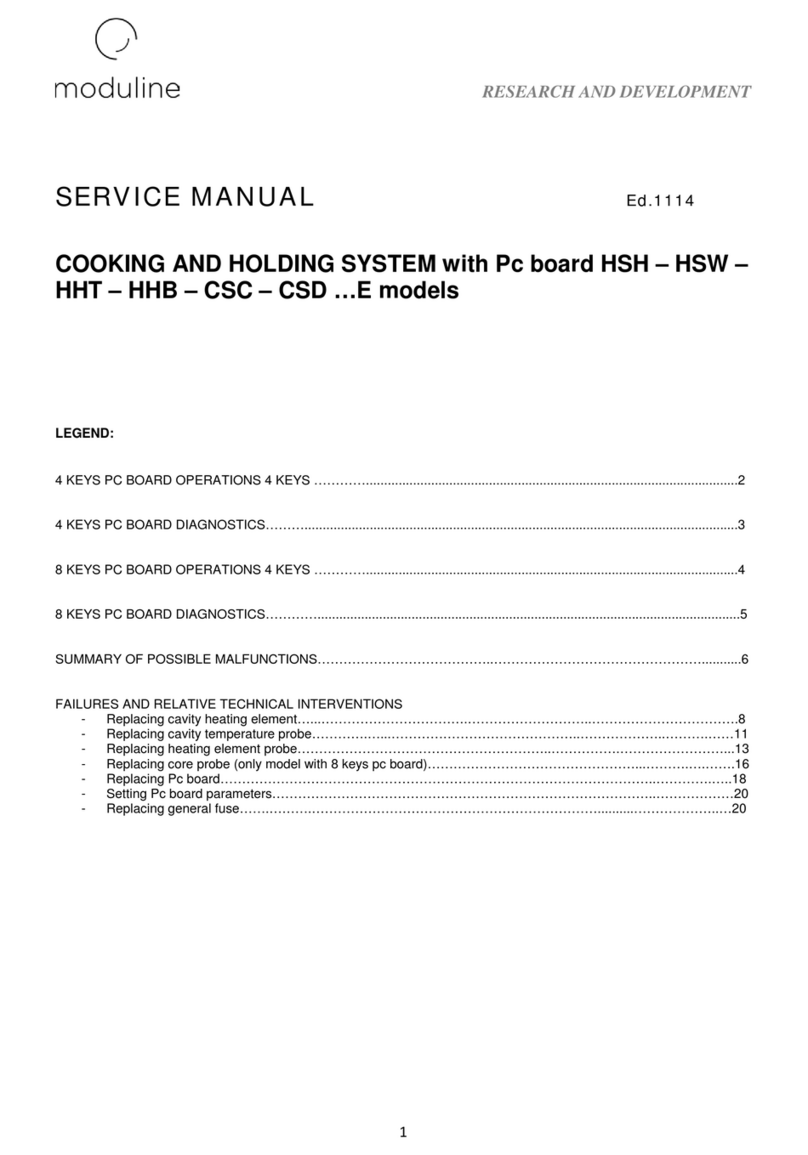
Moduline
Moduline HSH E Series Service manual
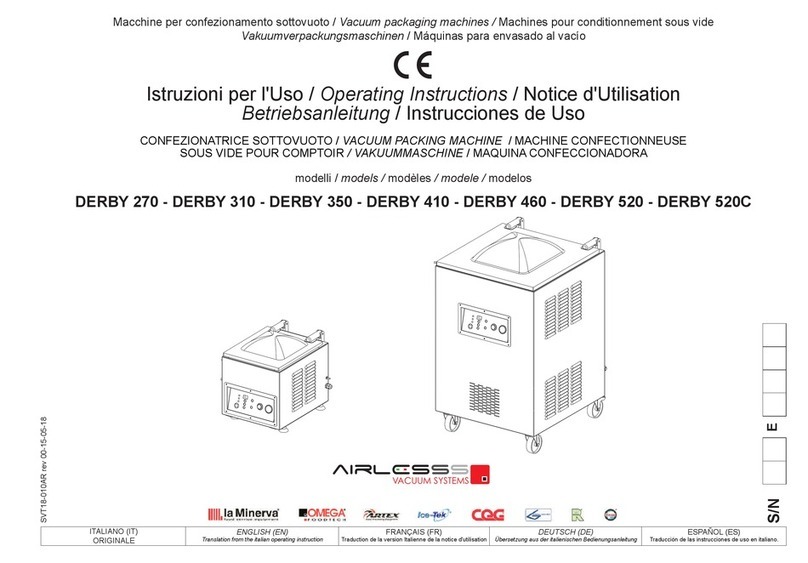
MINERVA OMEGA
MINERVA OMEGA DERBY 270 operating instructions
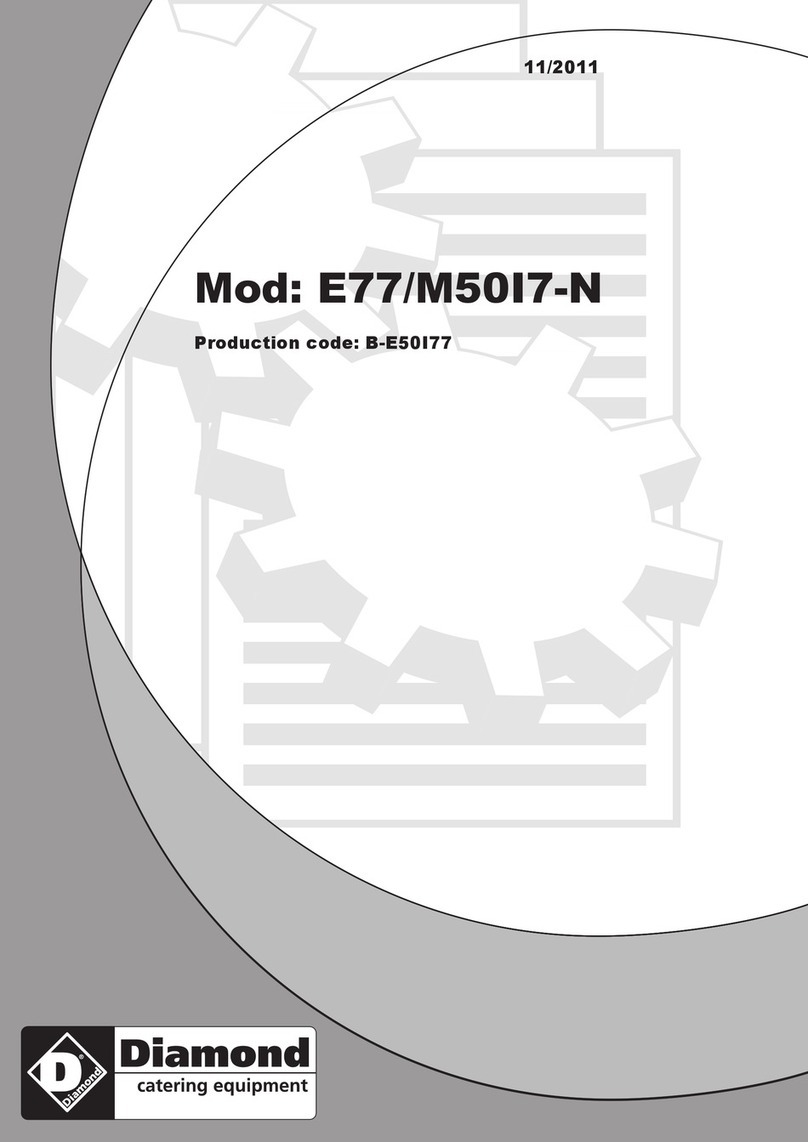
Diamond
Diamond OPTIMA 700 Installation, use and maintenance instructions
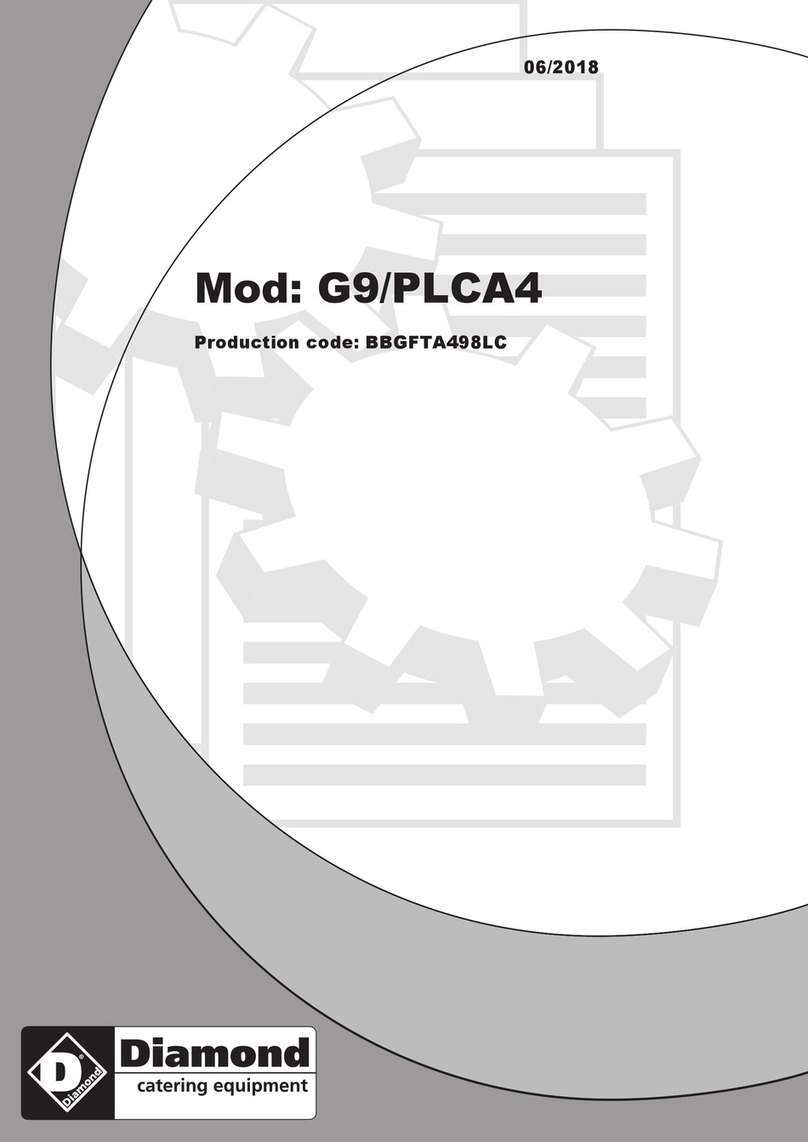
Diamond
Diamond G9/PLCA4 operating instructions
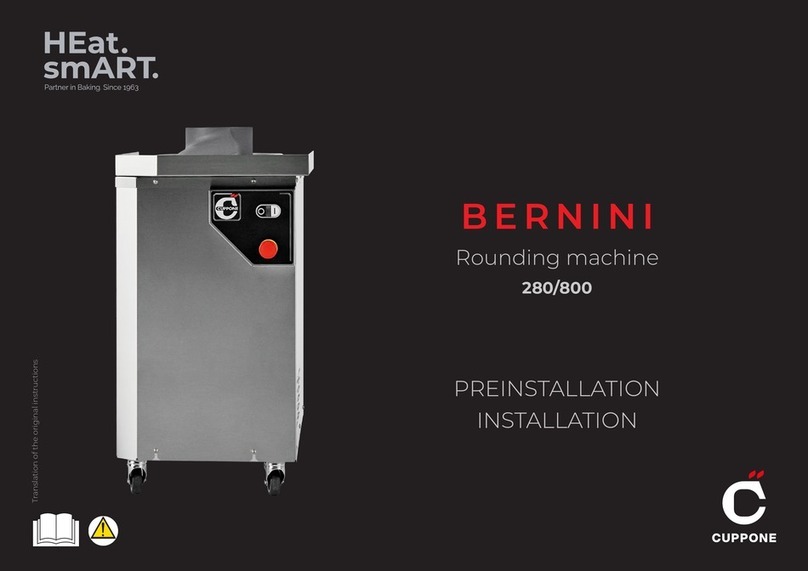
Cuppone
Cuppone BERNINI BRN 280 Installation

Arneg
Arneg Atlanta Direction for Installation and Use
